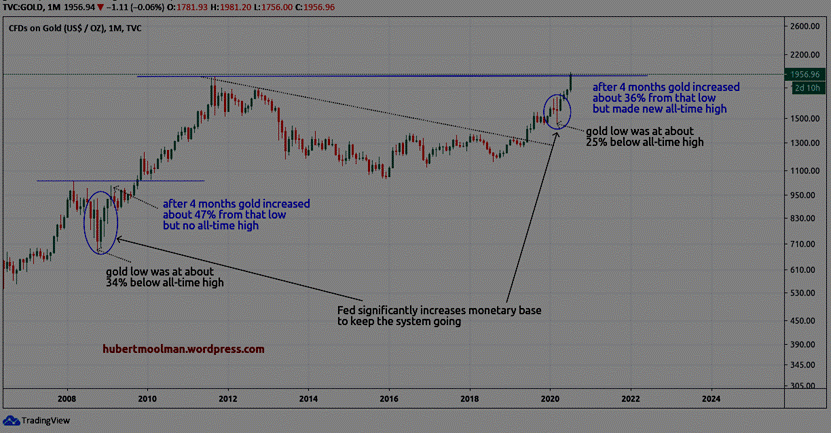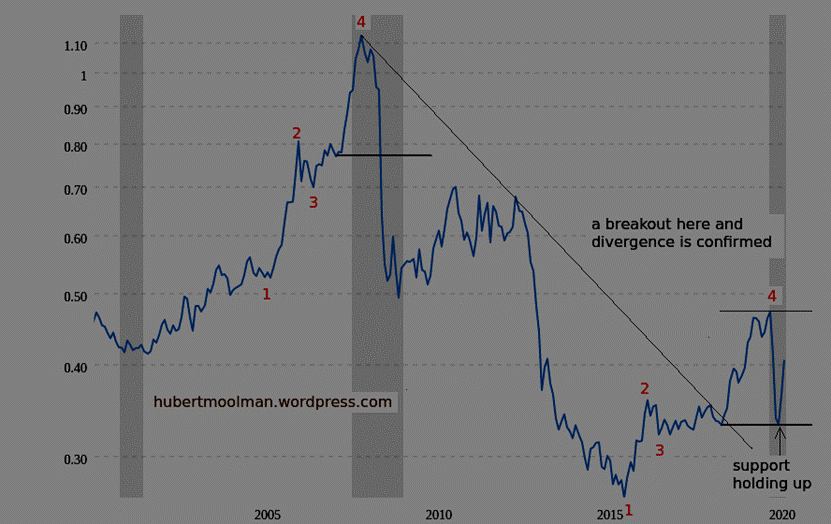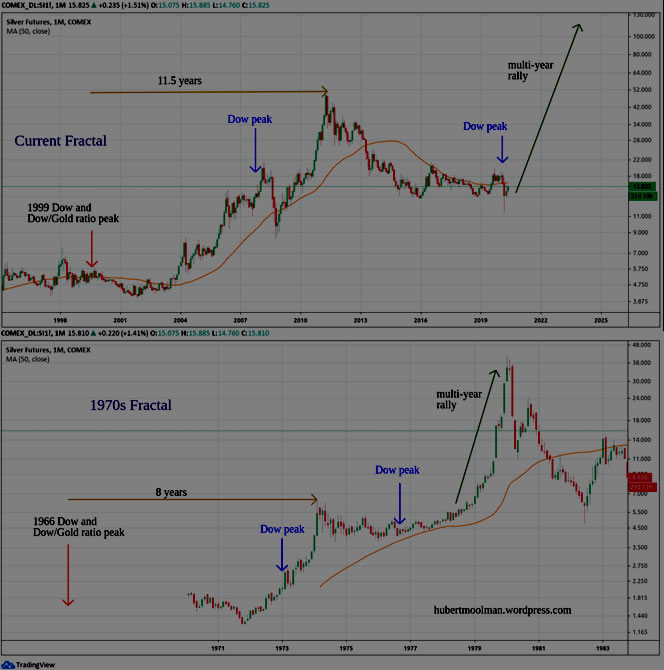Is Gold Price Action Warning Of Imminent Monetary Collapse - Part 2?
Commodities / Gold & Silver 2020 Aug 01, 2020 - 04:50 PM GMTBy: Hubert_Moolman
The following is an update of a previous article: During the 2008 financial crisis the Fed significantly increased the US monetary base to keep the system from collapse. They are currently in a similar situation, and have done (is doing) the exact same thing.
Here is a chart of the US monetary base to illustrate the similarity:

With the 2008 actions they were able to avoid the collapse until now. Will the current actions yield the same results, or will we see a completely different outcome?
One thing to look at for this answer is Gold (probably one of the most important things).
So, when the Fed increased the monetary base of the US significantly in 2008, it took Gold prices quite a long time to show price increases to catch up with the monetary base. Then, the Fed doubled the monetary base in a period of about four months. However, from around the same time the Gold price took almost three years to double, thereby only catching up very late in the game.
Gold was not crying system collapse, and rightly so.
That shows that there was still a decent amount of faith and resource in the monetary system to be able to continue.
The current increase in the monetary base only just stopped short of doubling the monetary base in a period of about four months. Below, is a chart of gold to see how gold reacted then and now:

At around the 2008 financial crisis (during the significant monetary base increase) gold fell to a low of about 34% below the then all-time high. After about 4 months gold increased about 47% from that low, but did not make a new all-time high.
The new all-time high only came about 13 months after the low of the crisis.
During the current crisis ( after the significant monetary base increase) gold fell to a low of a about 25% below the all-time high. It is also important to note that the fall to the low was percentage wise much lower than that of the 2008 crisis (indicating gold being much more resilient this time).
After about 4 months from the low, gold increased about 36%, which is lower than the 2008 increase. However, it did make a new-all time high this time (also there are still a few days left in this month).
Here is a chart that tracks the Gold price relative to the US monetary base (Gold price/US monetary base in millions):

Point 4 in 2008 is where the Fed increased the monetary base significantly. The eventual massive decline to lower than point 1, shows that the Gold price did not keep up with the US monetary base.
So, although Gold was going up during that same period, it was not warning of system collapse. There were two other periods in history that similar situations occurred, but gold actually was warning of a system collapse (or system bank run, if you will)
Those times were in 1933 and 1971, and you can read more about those (and the above chart) here. Both of those occasions resulted in a system reset.
In the chart above, there are two patterns marked out (1 to 4). The current pattern appears to follow the earlier pattern. If the similarity continues, then there is a good chance that the outcome of the current crisis will be like the 2008 one.
If there happens to be divergence from the earlier pattern, and Gold outruns the monetary base increase (by the chart going higher than point 4 over the coming months), then we are likely to see a radically different (and worse) outcome to the 2008 financial crisis.
Since the previous update, it appears that a divergence could be developing. It still has not gone higher than point 4, to confirm the divergence, but there are signs of it possibly happening over the coming months.
During the 2008 crisis, the ratio was unable to hold support just lower than point 2 (but higher than point 3). Currently the support at point 2 (but higher than point 3) appears to be holding, and we have seen a nice turnaround since the low.
With a new stimulus package coming, but gold looking very bullish, it will be interesting to see what will happen. To me it looks like the ratio could rise above point 4 soon, signaling a huge monetary (banking) crisis.
Silver is another important reason why the current financial crisis will be far worse than 2008. This silver chart is warning of a late 70s rally rather than a 2008 to 2011 kind of rally:

For more on this, and similar analysis you are welcome to subscribe to my premium service. I have also recently completed a Silver Fractal Analysis Report as well as a Gold Fractal Analysis Report.
Warm regards,
Hubert
“And it shall come to pass, that whosoever shall call on the name of the Lord shall be saved”
http://hubertmoolman.wordpress.com/
You can email any comments to hubert@hgmandassociates.co.za
© 2020 Copyright Hubert Moolman - All Rights Reserved
Disclaimer: The above is a matter of opinion provided for general information purposes only and is not intended as investment advice. Information and analysis above are derived from sources and utilising methods believed to be reliable, but we cannot accept responsibility for any losses you may incur as a result of this analysis. Individuals should consult with their personal financial advisors.
© 2005-2022 http://www.MarketOracle.co.uk - The Market Oracle is a FREE Daily Financial Markets Analysis & Forecasting online publication.



